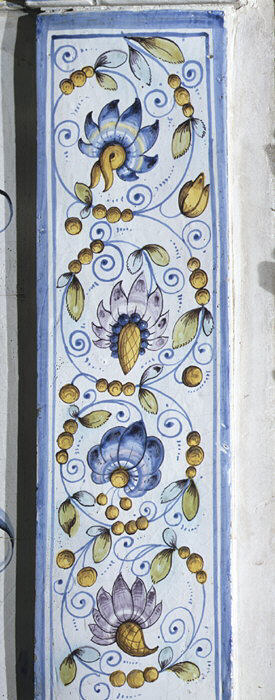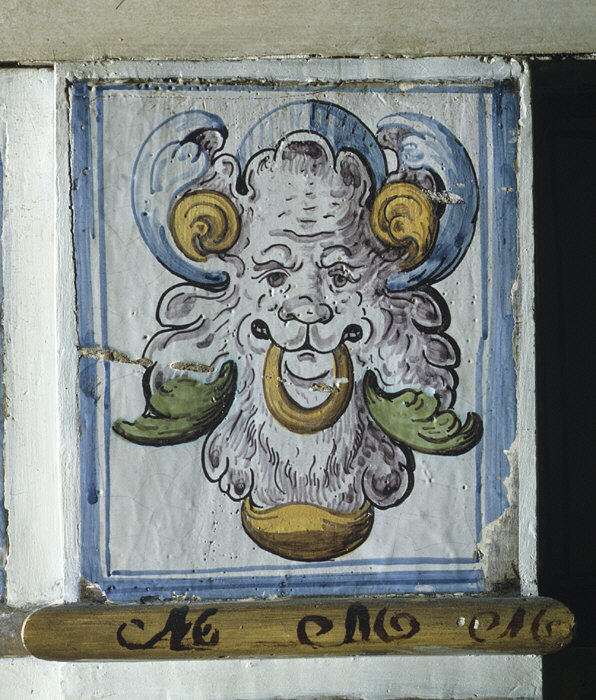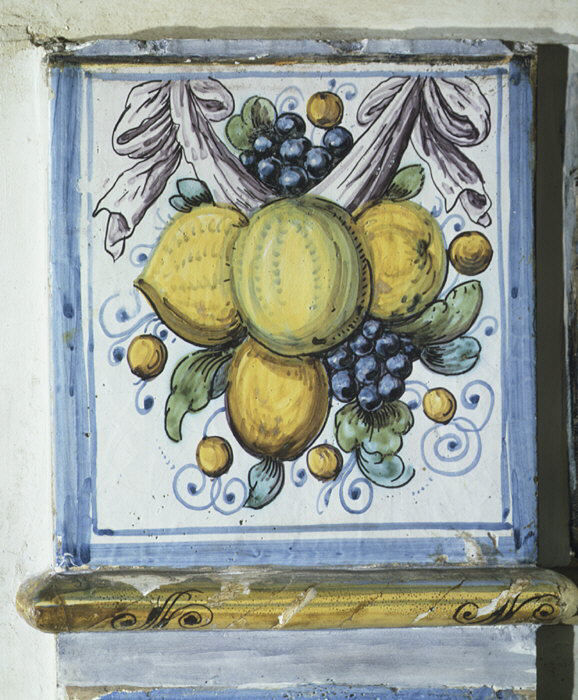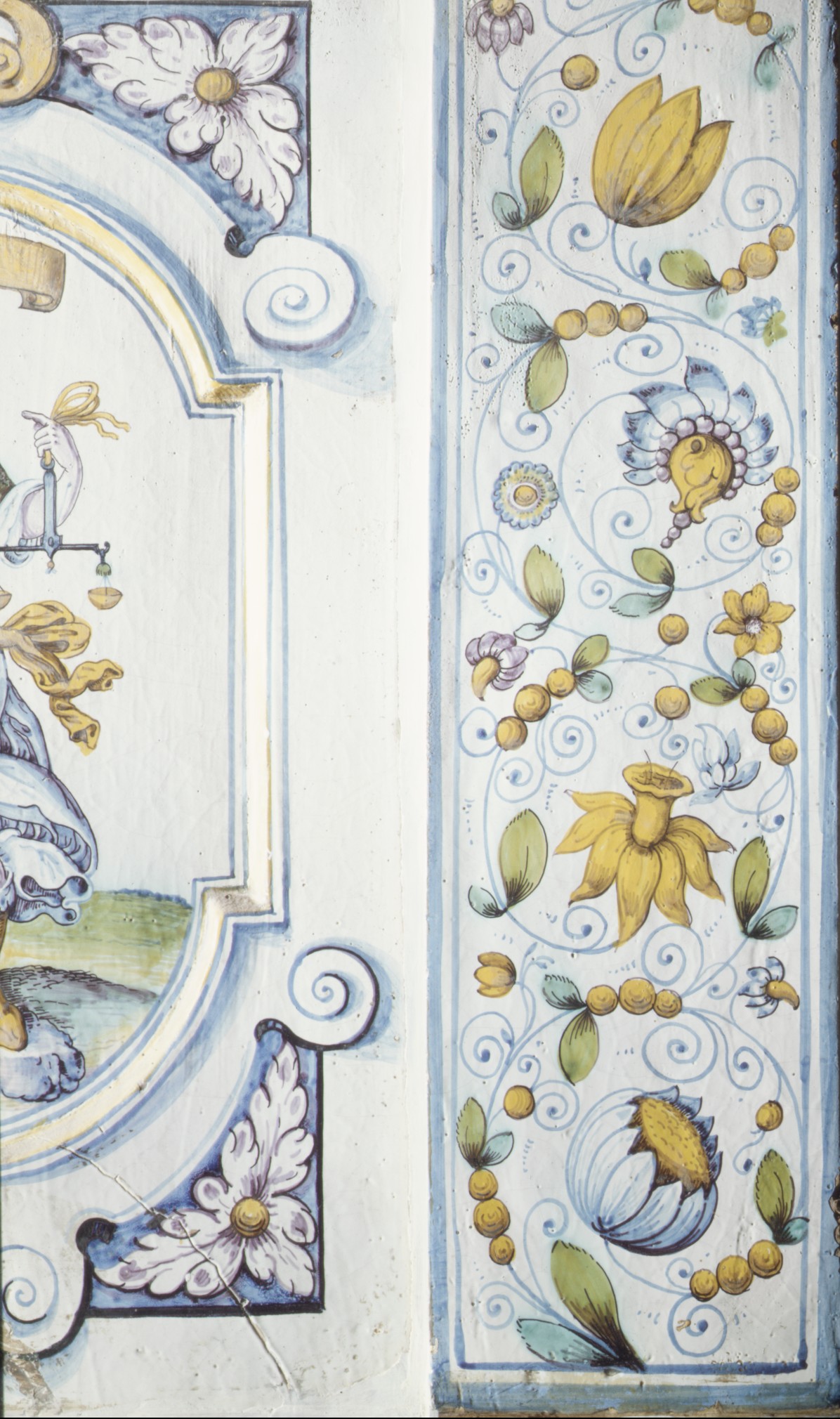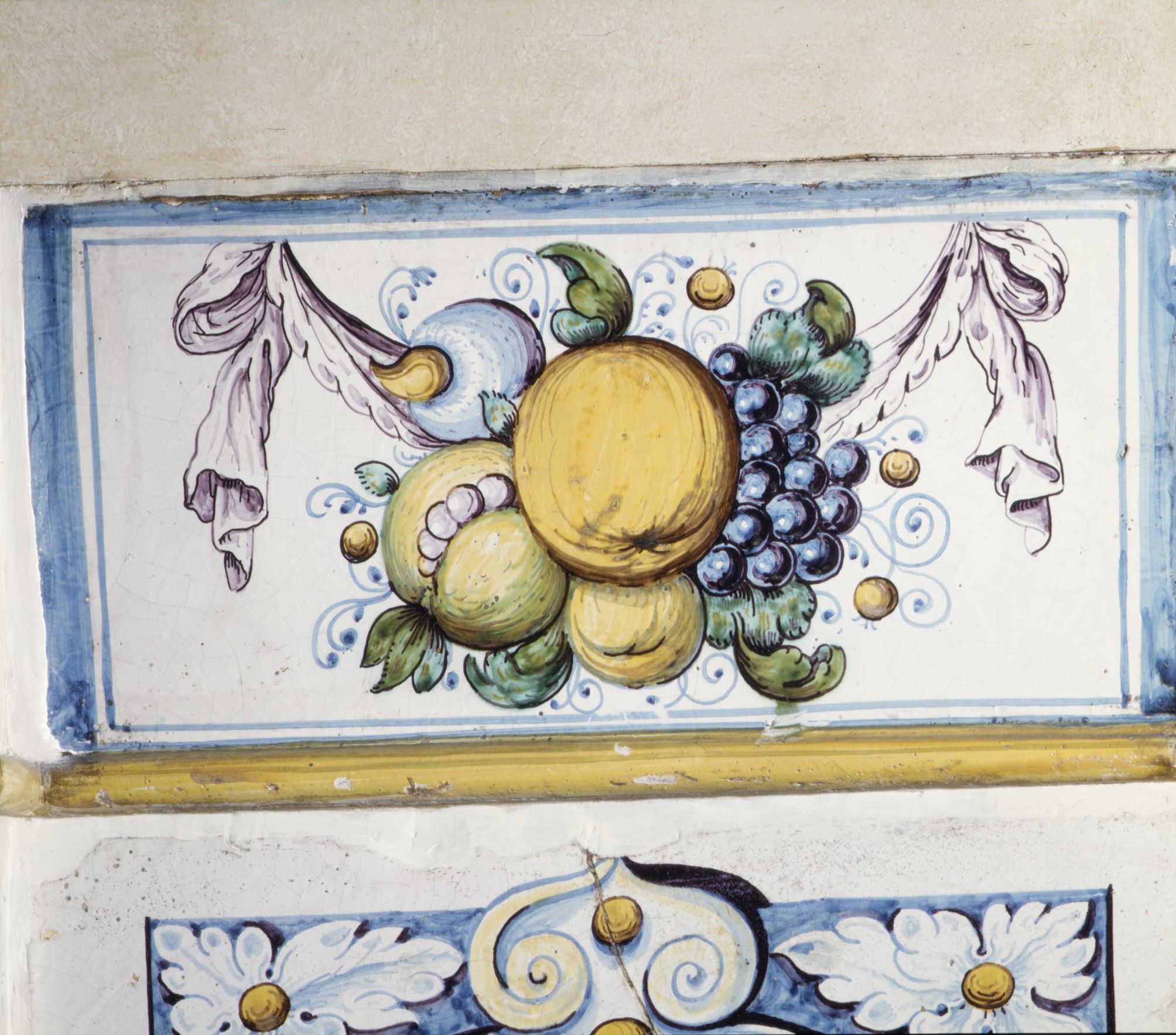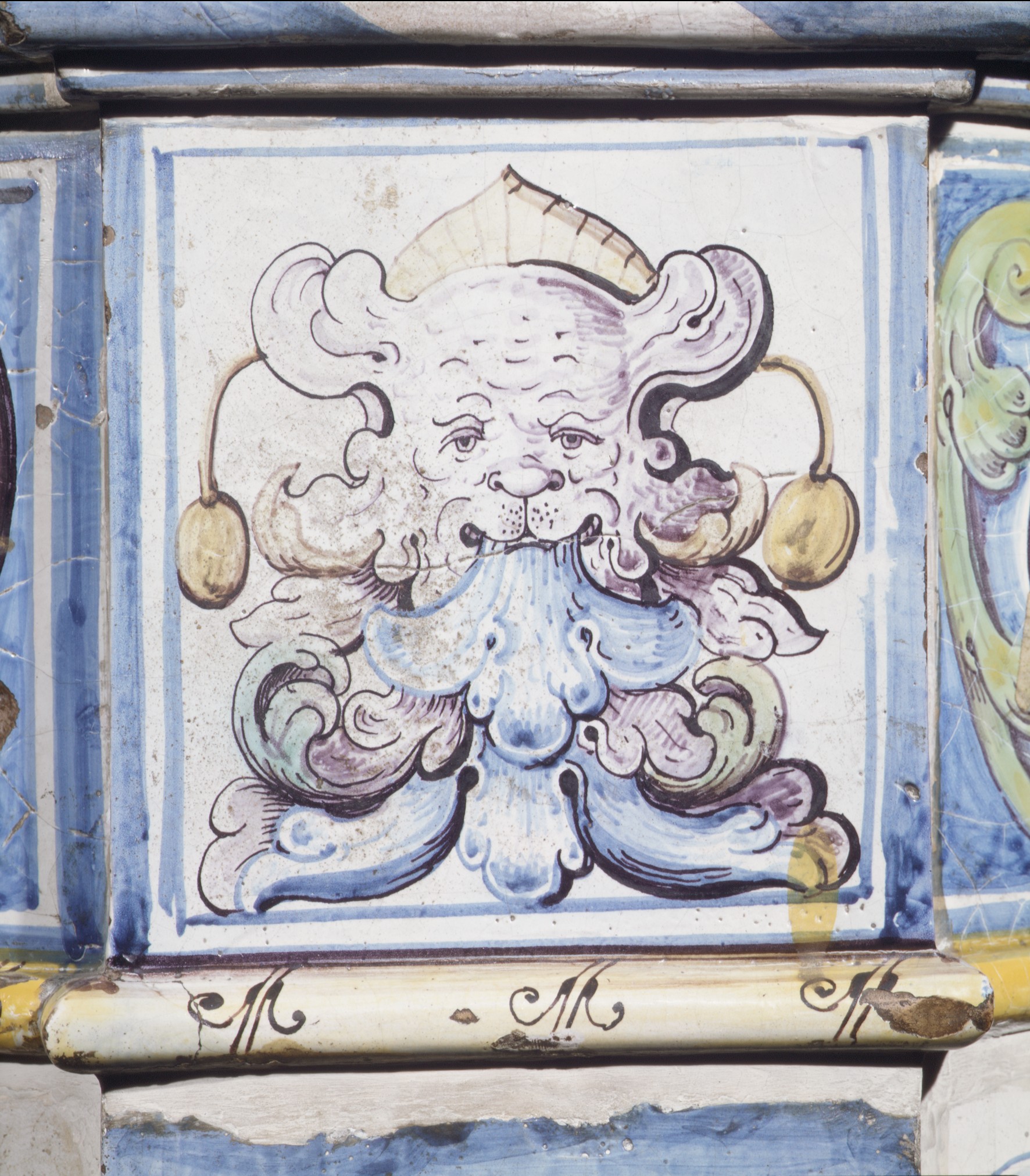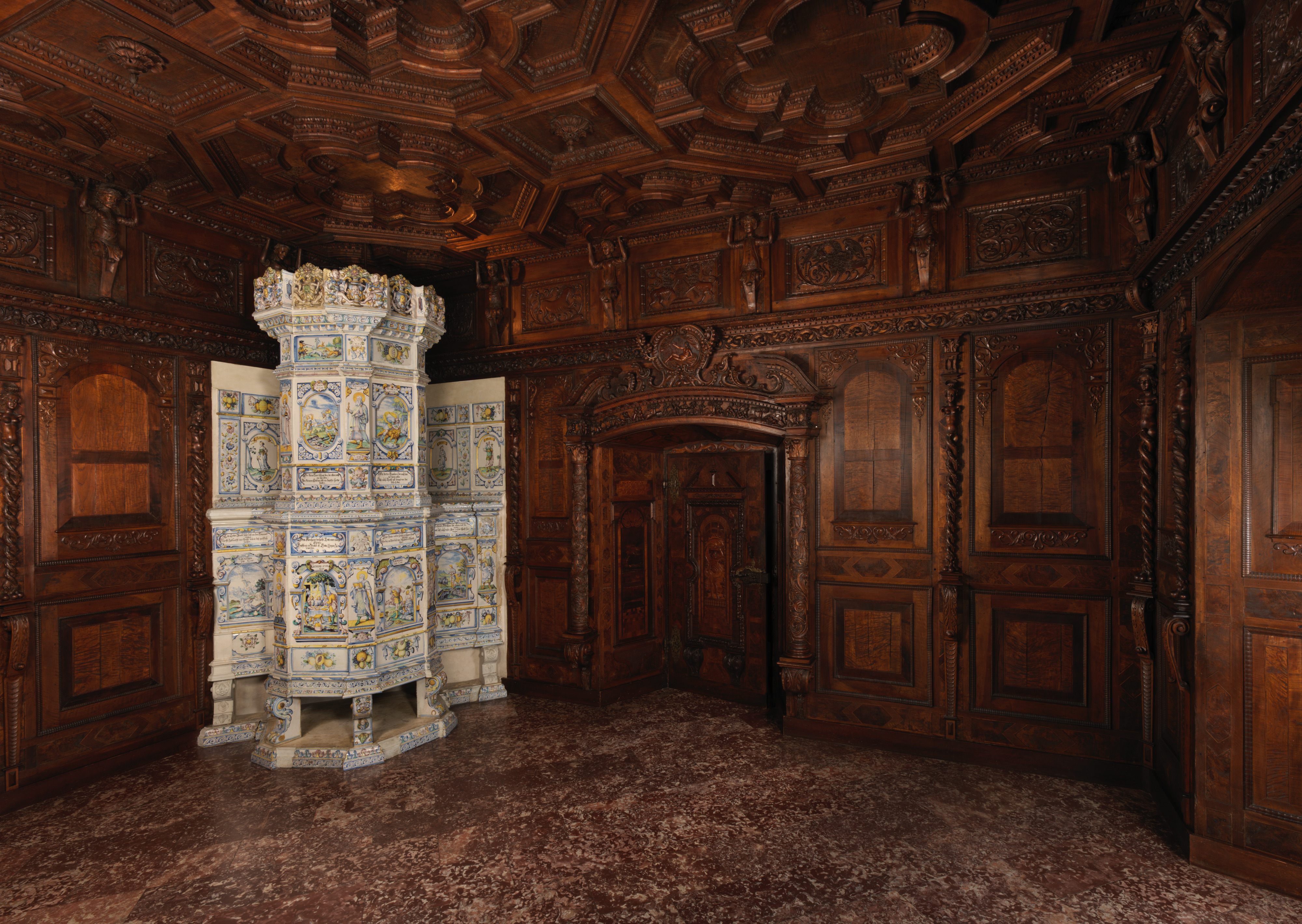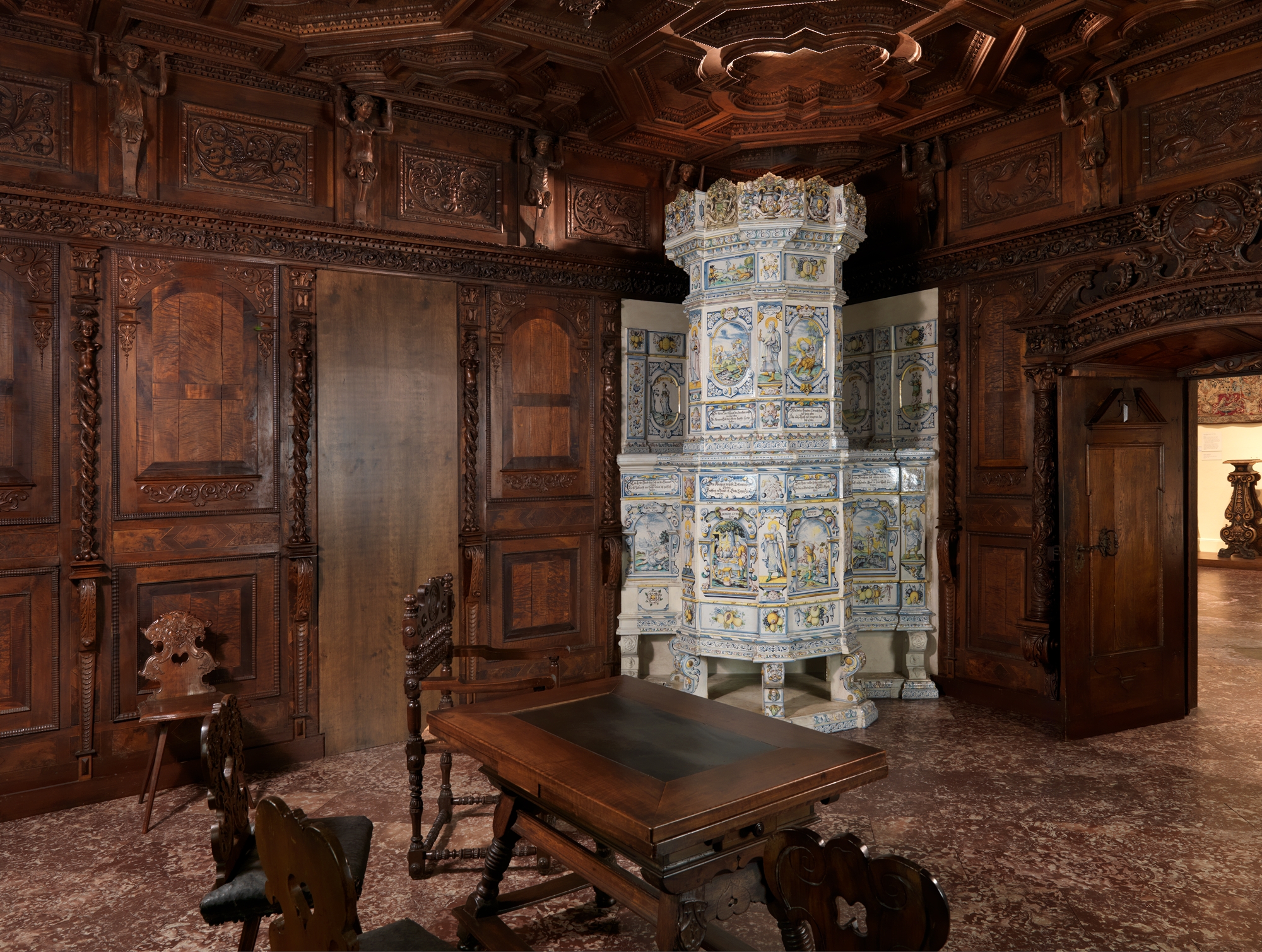Stove
This colorful, large, ceramic stove was made for the paneled room in which it still stands, the Reiche Stübe, or "Rich Room," of the Schlössli (Little Castle), a manor house built in 1682 for Johann Gaudenz von Capol (1641–1723), a member of the leading family of Flims, in the Protestant canton of Grisons in eastern Switzerland. Stoves were common in alpine regions, where the bitter cold of winter was unrelieved for months at a time. They provided continuous radiant heat, facilitated by the white reflecting surface of the tiles. The enclosed fire both conserved wood fuel and removed the danger of smoke and sparks common with open fires.
Made in Winterthur, an important Swiss center for faience, these tiles are painted on all sides with figures from the New Testament and stories from the Old Testament. In the lower section the faience painter used designs by Tobias Stimmer (1539–1584) published in Basel in 1576, while those decorating the upper sections were inspired by the etchings of Christoph Murer (1558–1614) published in Strasbourg in 1625. The painter added biblical references above each scene and commentaries below, finding a teaching or message for contemporary Christians in the biblical events. For example, the commentary beneath the scene of Samson and the lion reads, "As Samson's lion gave honey after his death, so Christ's death brings us sweet life." It has been suggested that the pottery of David II Pfau (1644–1702) of Winterthur may have designed and produced the stove with the help of his cousin Hans Heinrich III Pfau.
Due to rights restrictions, this image cannot be enlarged, viewed at full screen, or downloaded.
This artwork is meant to be viewed from right to left. Scroll left to view more.




